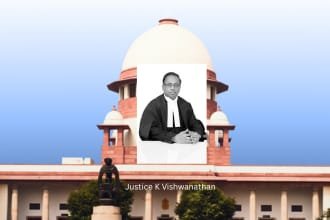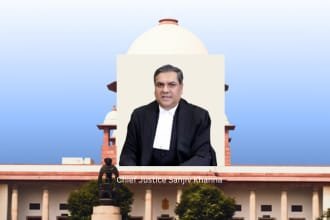In a significant observation that underscores the enduring legacy of India’s constitutional jurisprudence, Justice KV Viswanathan of the Supreme Court of India recently affirmed that the Basic Structure doctrine is here to stay, regardless of any possible referendum. His statement comes at a time when the relevance and inviolability of this doctrine are being debated by some legal and political circles.
The comment was made during a public event on April 14, 2025, where Justice Viswanathan emphasized the resilience of India’s constitutional ethos. He highlighted that no viable alternative theory has yet been presented to challenge the Basic Structure doctrine, which forms the bedrock of Indian constitutional democracy.
What is the Basic Structure Doctrine?
The Basic Structure doctrine was first propounded by the Supreme Court in the landmark Kesavananda Bharati v. State of Kerala case in 1973. This doctrine holds that while Parliament has wide powers to amend the Constitution, it cannot alter or destroy its “basic structure.” Elements such as judicial review, secularism, the rule of law, separation of powers, and federalism are considered part of this core structure.
This ruling was a turning point in Indian constitutional history, safeguarding the fundamental principles of governance and acting as a bulwark against authoritarian tendencies. It effectively struck a balance between the power of the Parliament to legislate and the supremacy of the Constitution.
Justice KV Viswanathan Defends the Doctrine’s Relevance
Justice Viswanathan’s statement is a strong endorsement of the doctrine, especially in light of the recent calls questioning its legitimacy and democratic character. According to him, “Even if there is a referendum, the basic structure of the Constitution will remain intact.” He noted that constitutionalism is not merely a majoritarian construct, and that the principles underpinning the Constitution are timeless.
Interestingly, his comments come amidst discussions by some political commentators and legal scholars who argue that the Basic Structure doctrine gives unelected judges the final say over constitutional amendments, thereby undermining parliamentary sovereignty.
However, Justice Viswanathan countered this by stating that no strong theoretical or jurisprudential challenge has been offered against the doctrine that could justify its dismantling or dilution.
A Tribute to Kesavananda Bharati
Justice Viswanathan also called for greater recognition of Kesavananda Bharati, the petitioner in the historic case. He suggested that a portrait or a statue of Kesavananda Bharati be installed at appropriate judicial or public institutions, to honor his pivotal role in shaping India’s constitutional landscape.
This proposal, if acted upon, would not only recognize Kesavananda Bharati’s legacy but also serve as a reminder of the importance of constitutional safeguards in a democratic republic.
Why is the Basic Structure Doctrine Important Today?
In today’s political climate, where constitutional amendments are often driven by majoritarian agendas, the Basic Structure doctrine serves as a vital check on the excesses of legislative power. It protects the democratic and liberal framework of the Constitution from being eroded through the amendment process.
With frequent changes in government and shifting political ideologies, the doctrine ensures that certain core values remain untouched, thereby preserving the original spirit of the Constitution envisioned by the framers.
Criticism and Counterpoints
Critics of the Basic Structure doctrine argue that it allows the judiciary to usurp the role of the legislature. They claim that by preventing Parliament from amending certain parts of the Constitution, the judiciary limits democratic decision-making.
However, supporters argue that this interpretation misreads the intent of the doctrine. Far from being undemocratic, the doctrine ensures continuity, stability, and integrity in governance. It prevents the rise of constitutional authoritarianism and preserves civil liberties, even in times of political flux.
Judiciary as the Guardian of the Constitution
Justice Viswanathan’s remarks reaffirm the Supreme Court’s role as the guardian of the Constitution. The judiciary has often had to intervene to ensure that constitutional amendments do not trample upon the essential features of the document.
Cases like Minerva Mills v. Union of India (1980) and Indira Gandhi v. Raj Narain (1975) further cemented the principle that constitutional amendments cannot infringe upon fundamental democratic principles.
This judicial stance has helped India maintain its democratic fabric over decades, even when it faced severe political and social turmoil.
Conclusion
Justice KV Viswanathan’s clear and firm endorsement of the Basic Structure doctrine is a timely reminder of the principles that anchor Indian democracy. At a moment when some quarters are raising doubts about the judiciary’s role in constitutional interpretation, his words provide much-needed clarity and reassurance.
The Basic Structure doctrine is not a hurdle to democratic governance but a safeguard against its possible derailment. It ensures that the Constitution remains a living document, resilient yet adaptable, without compromising on its foundational values.
As India continues to evolve, the doctrine will undoubtedly remain a crucial part of its legal and democratic framework—defending the spirit of the Constitution from the tides of transient political majorities.



